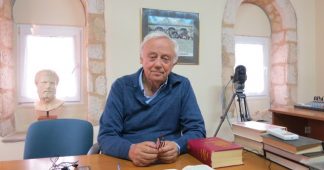by Dr Menachem Oberbaum,
MD, FFHom (Lond.) (1)
For the past 200 years, Homeopathy has struggled to find its place in mainstream medicine. Despite its many achievements in combating epidemics and chronic diseases, homeopathy has not been widely accepted by the broader medical community. This resistance is due to several reasons, with a major one being the discrepancy between conventional and homeopathic paradigms. Specifically, there is scepticism about how a remedy diluted beyond Avogadro’s number, effectively containing no molecules, can induce any biological activity, let alone a specific one. As a result, homeopathy has largely remained on the fringes of mainstream medicine and has not fully developed its potential.
In the last four decades, scientists who have observed the clinical benefits of homeopathy have attempted to uncover the mechanisms behind it. They have sought to identify the signal transmitted by these highly diluted solutions that can affect biological systems and promote healing. However, many of these attempts failed due to a lack of deep understanding of homeopathic principles and limited access to sophisticated research tools.
Over the past eight years, a research team from the International Academy of Classical Homeopathy, guided by Professor George Vithoulkas and led by Dr. Camelia Grosan, PhD, has worked to provide conclusive evidence addressing the long-standing scepticism surrounding homeopathic remedies. Using advanced analytical techniques, they have made significant progress. Their research involved transmission electron microscopy to evaluate the morphological characteristics of ethanol- and water-based highly diluted solutions of Aurum metallicum in three potencies (6C, 30C, and 200C). Additionally, they employed Raman spectroscopy and deep learning algorithms to analyse the three potentization levels of purified water, unpurified water, and purified water-based Aurum solutions.
The results demonstrated that different potencies of Aurum (and likely other remedies) have specific signatures that can be characterized and differentiated. Moreover, the researchers showed that Aurum’s structure includes cluster arrangements composed of smaller or larger formations. These clusters are more evident in high dilutions beyond Avogadro’s number and are influenced by the solvent’s nature and the level of potentization. Higher potencies result in more branched and larger structures. This extensive organization over large areas contributes to the stability of the structures, potentially explaining why higher potencies have more prolonged and profound effects.
The findings of this research, published in the Journal of Molecular Liquids (Impact Factor 6.0), provide compelling evidence that potentized homeopathic remedies, beyond Avogadro’s number, leave a detectable and specific signal in the succussed dilution.
https://www.sciencedirect.com/science/article/pii/S0167732224005932
(1) Dr Menachem Oberbaum, MD, FFHom (Lond.)
ex Director, The Center for Integrative Complementary Medicine, Shaare Zedek Medical Center, Israel.
We remind our readers that publication of articles on our site does not mean that we agree with what is written. Our policy is to publish anything which we consider of interest, so as to assist our readers in forming their opinions. Sometimes we even publish articles with which we totally disagree, since we believe it is important for our readers to be informed on as wide a spectrum of views as possible.









